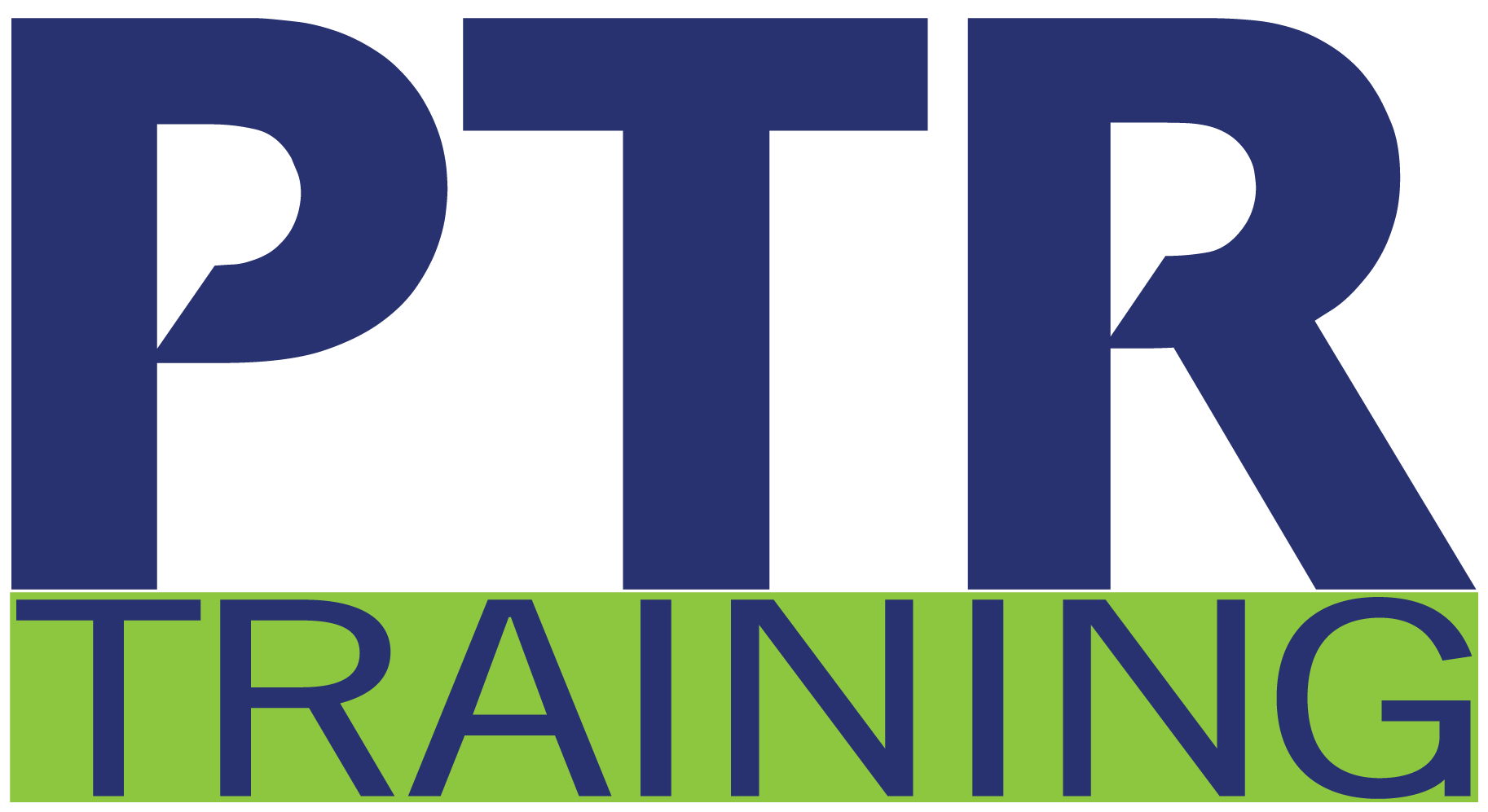
Workplace stress is one of the most pressing challenges organizations face today. From tight deadlines and high workloads to organizational change and remote work complexities, stress levels among employees have been steadily rising. According to the American Institute of Stress, 83% of U.S. workers suffer from work-related stress, and nearly half of them say they need help managing it.
While there are many contributing factors, one of the most overlooked yet powerful drivers of stress is communication. Poor communication magnifies stress and disengagement, while clear, empathetic communication helps employees feel supported and resilient. In fact, workplace communication is not just an operational necessity — it is a strategy for employee well-being and organizational success.
In this blog, we’ll explore the connection between stress and communication, identify the best communication practices that reduce workplace stress, highlight the worst communication habits that fuel it, and share practical strategies HR leaders, managers, and organizations can apply. We’ll also show how training solutions can help leaders build communication skills that directly impact retention, productivity, and employee well-being.
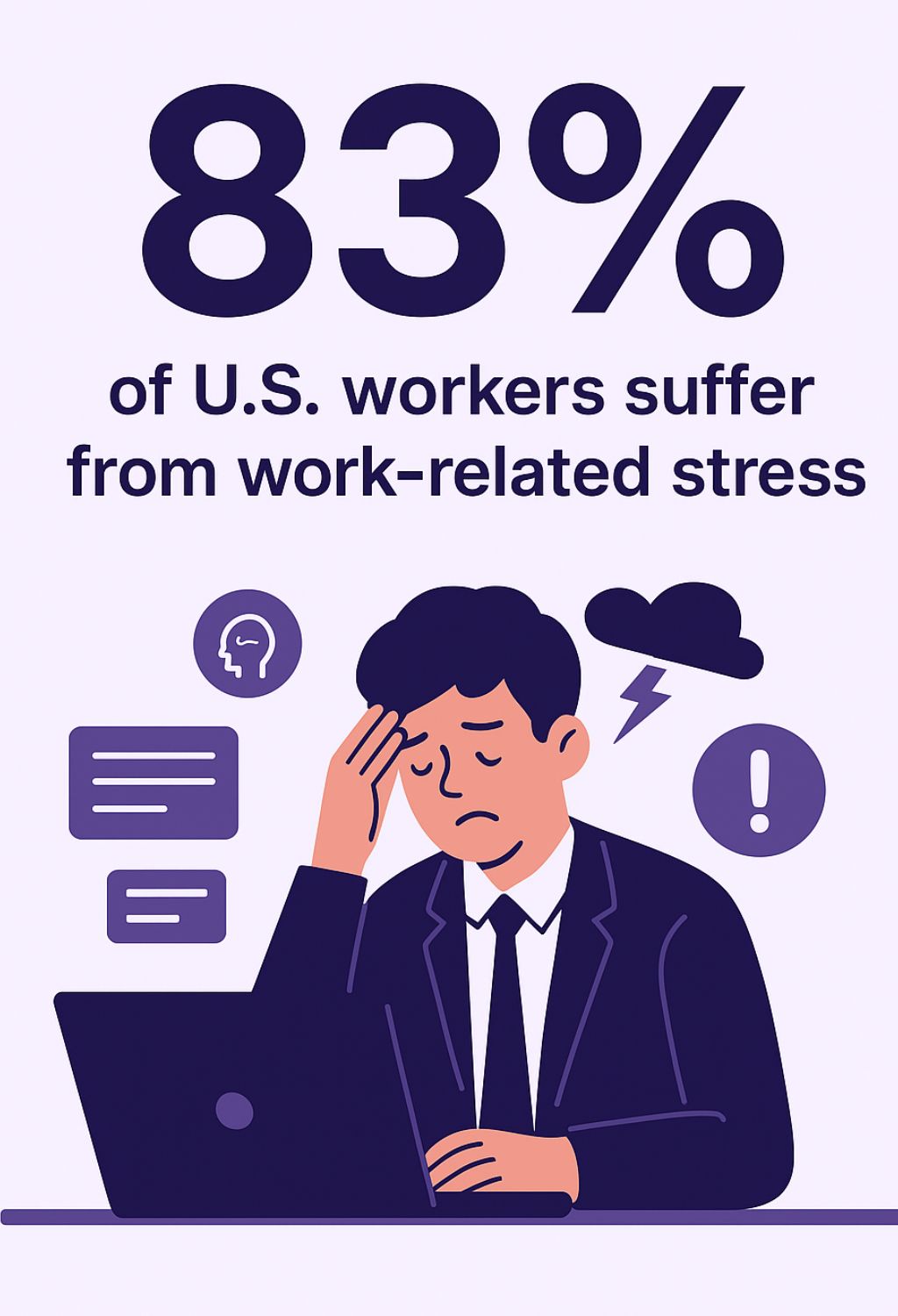
Understanding Workplace Stress
Workplace stress occurs when the demands of a job exceed an employee’s ability to cope. Stress itself is not always negative — short bursts can motivate productivity. However, prolonged or unmanaged stress leads to burnout, disengagement, and turnover.
Some of the most common workplace stressors include:
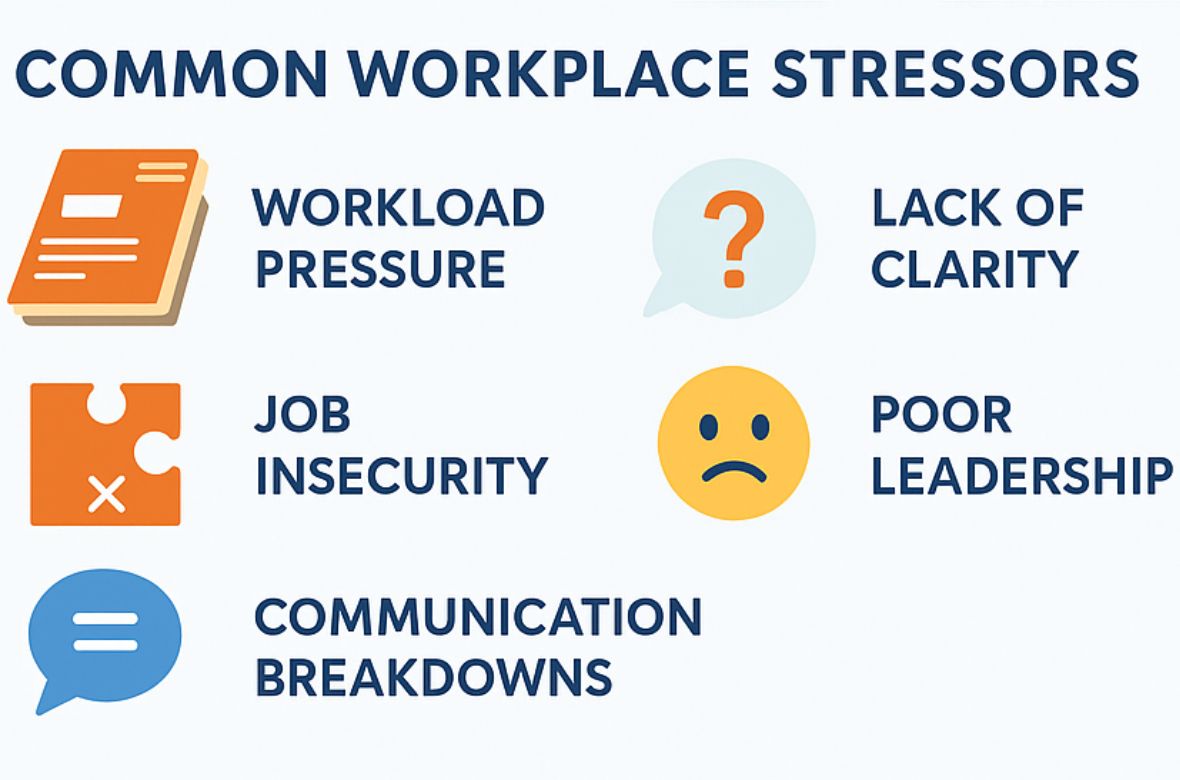
- Workload pressure – excessive tasks and unrealistic deadlines.
- Lack of clarity – not knowing expectations or goals.
- Job insecurity – uncertainty around roles or company changes.
- Poor leadership or management – limited support or unfair treatment.
- Communication breakdowns – inconsistent, vague, or negative communication from leaders or colleagues.
Among these, communication plays a unique role: it can either amplify stress or alleviate it. How managers and leaders communicate in high-pressure situations determines whether employees feel anxious and unsupported, or calm and engaged.
How Communication Impacts Workplace Stress
Communication is at the heart of how people experience their jobs. Clear communication ensures employees understand their responsibilities, feel connected to company goals, and have confidence in leadership. Poor communication leaves employees feeling confused, undervalued, and frustrated.
- When communication is poor: employees often experience misalignment, second-guess instructions, and feel left out of decision-making. This creates unnecessary mental strain.
- When communication is strong: employees feel included, trust leadership, and are motivated to perform. Stress levels decrease because expectations are clear and support is available.
Research consistently shows that ineffective communication is a leading cause of stress in the workplace.
- A recent survey found that 51% of employees said ineffective communication increased their workplace stress, and 61% have even considered quitting because of poor internal communication.
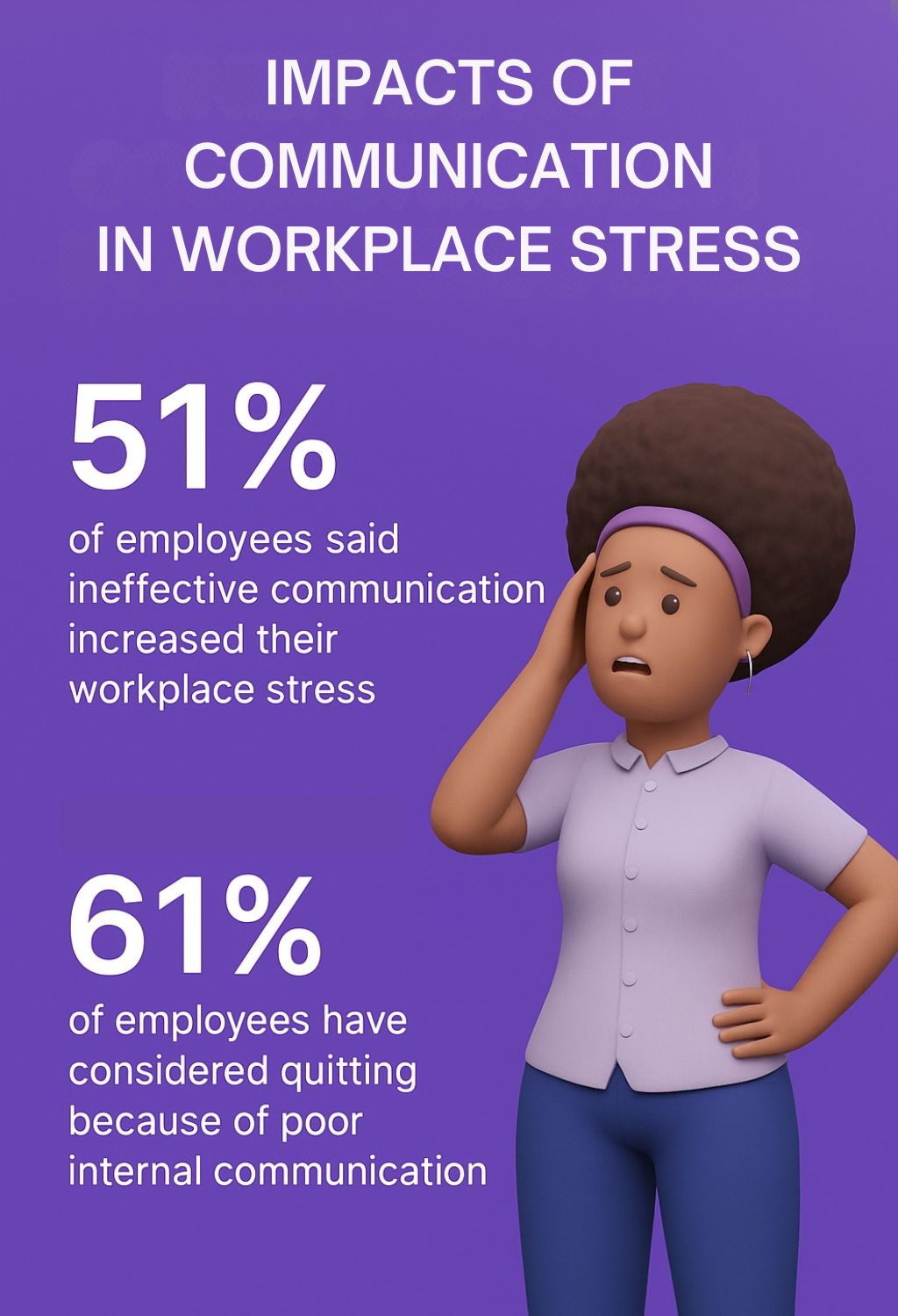
Worst Communication Practices (That Increase Stress)
Let’s begin with communication habits that leaders and teams should avoid, as they often worsen stress and create tension:
1. Unclear Instructions & Expectations
When leaders provide vague directions or fail to outline expectations, employees are left guessing. This creates anxiety, delays, and mistakes. Over time, it leads to frustration and loss of confidence.
2. Inconsistent Updates
In times of organizational change, inconsistency in communication fuels rumors and uncertainty. Employees who are left in the dark about important updates experience higher stress and disengagement.
3. Negative or Abrasive Tone
The way something is said often matters more than what is said. A harsh, critical, or dismissive tone demoralizes employees and increases stress. Leaders who fail to show empathy create a culture of fear instead of collaboration.
4. Information Overload
Ironically, too much communication can be just as harmful. Constant emails, endless meetings, and multiple chat platforms overwhelm employees, leaving them unable to focus. Instead of clarity, overload causes confusion and exhaustion.
5. Ignoring Feedback
When employees feel unheard, it damages trust and drives disengagement. If staff feedback is consistently ignored or dismissed, employees often feel undervalued, which contributes to stress and higher turnover.
6. Last-Minute Surprises
Dropping major updates, deadlines, or policy changes without notice creates unnecessary panic. Employees who are blindsided by unexpected changes feel disrespected and anxious.
7. Overuse of Jargon or Complex Language
Overly technical or confusing communication creates barriers. Employees may hesitate to ask questions for fear of looking unprepared, which results in stress and mistakes.
Best Communication Practices (That Reduce Stress)
In contrast, good communication creates a supportive environment where employees feel heard, guided, and confident in their roles. Here are practices that significantly reduce workplace stress:
1. Clarity and Consistency
Leaders should consistently communicate goals, expectations, and updates in clear terms. Employees who know what’s expected of them report less stress and perform better.
2. Empathetic Two-Way Communication
Effective communication is not one-way. Leaders must encourage dialogue, actively listen to employee concerns, and respond with empathy. This builds trust and reduces stress.
3. Regular Check-Ins
Weekly team meetings, one-on-ones, or virtual check-ins create structured opportunities for employees to share progress, ask questions, and seek support. Consistent check-ins provide reassurance and lower stress.
4. Positive and Supportive Tone
Recognizing achievements, providing constructive feedback, and addressing concerns respectfully help foster resilience and engagement. Leaders who use a positive tone build confidence and morale.
5. Streamlined Communication Channels
Organizations should establish guidelines for digital communication tools. Instead of using multiple platforms simultaneously, create clear norms for how and when to use email, chat, or meetings. This avoids confusion and reduces overload.
6. Transparency During Change
When organizations go through transitions, open and transparent communication is critical. Explaining why changes are happening and how they will impact employees reduces speculation and stress.
7. Inclusive Communication
Encourage input from diverse employees and departments. Inclusive communication ensures all voices are heard, promoting collaboration and reducing stress caused by exclusion.
“Research shows that effective communication leads to a 23% improvement in overall employee well-being and can also boost productivity by up to 25%.”
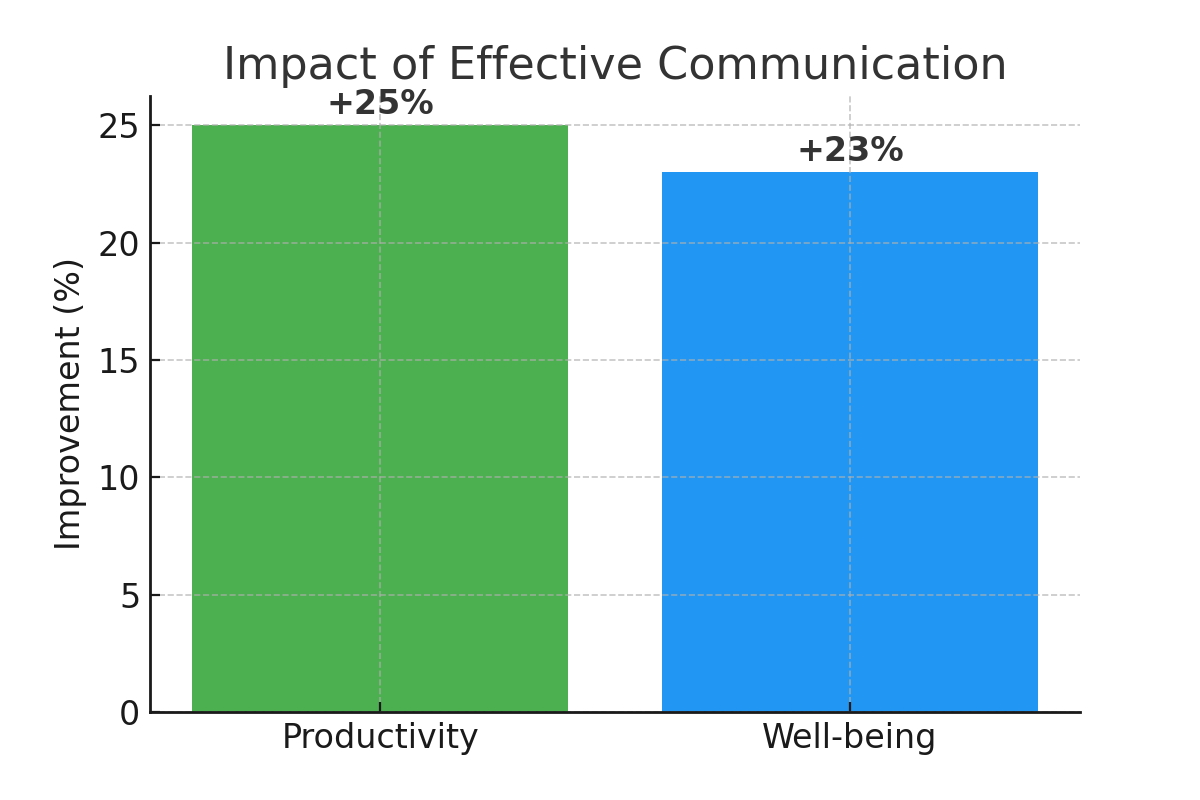
Practical Tips for Leaders & HR Managers
To reduce workplace stress through communication, here are some actionable strategies:
- Model Open Communication: Leaders should share updates consistently and honestly, creating a high performance culture of trust.
- Provide Training: Equip managers with skills in active listening, feedback, and conflict resolution.
- Use Feedback Tools: Implement surveys, suggestion boxes, or digital platforms to encourage continuous feedback.
- Set Communication Norms: Establish guidelines on email response times, meeting frequency, and chat usage.
- Celebrate Wins: Regularly recognize team and individual achievements to reinforce positivity.
- Be Accessible: Make sure managers are approachable and employees feel safe to share concerns.
Train for Emotional Intelligence: Leaders who understand and manage emotions communicate better and reduce stress in their teams.
How to Reduce Workplace Stress Through Communication
To truly manage stress, leaders must view communication as more than a task. It’s a leadership skill and a cultural foundation. The best communication is:
- Clear: Leaves no room for confusion or misinterpretation.
- Consistent: Employees know when and how updates happen.
- Empathetic: Leaders listen and respond to concerns with care.
- Inclusive: Everyone feels their voice matters.
- Transparent: Honesty reduces fear and builds trust.
When leaders commit to these principles, stress levels decrease, retention improves, and organizational culture thrives.
Partnering with PTR for Stress-Free Communication Training
At PTR Training, we understand the critical role of communication in reducing stress and improving performance. With over 20 years of expertise, we’ve trained more than 550,000 professionals across corporations and government agencies.
Our specialized communication Training courses in effective workplace communication, leadership communication, and employee engagement are designed to help managers and teams:
- Effective Workplace Communication – Building clarity and confidence in messaging.
- Leadership Communication – Helping leaders inspire, motivate, and reduce stress.
- Employee Engagement Strategies – Strengthening collaboration and trust across teams.
- Conflict Resolution & Feedback Skills – Equipping managers to handle challenges constructively.
Whether virtual or onsite, our training is designed to deliver measurable results. Leaders who communicate effectively not only reduce stress but also unlock higher performance, engagement, and retention.
Ready to build a stress-resilient workplace through better communication? Explore PTR’s training programs and empower your team today.
